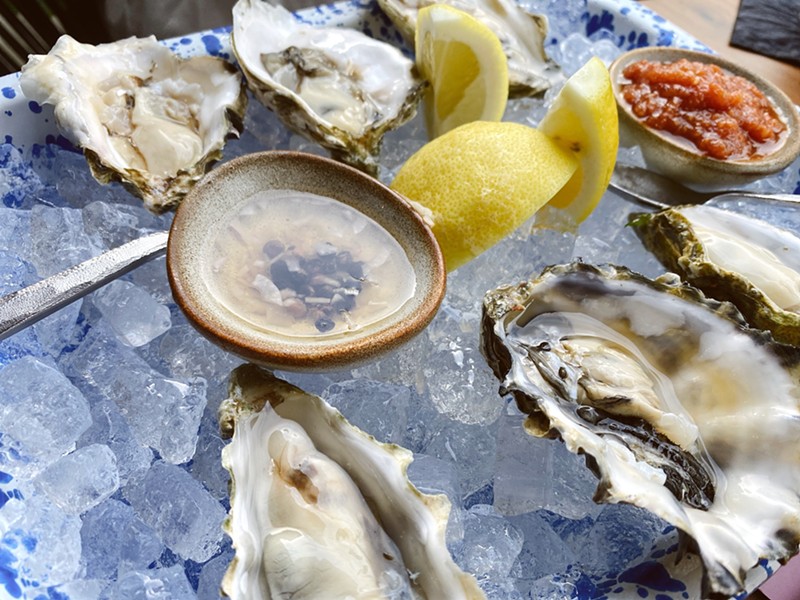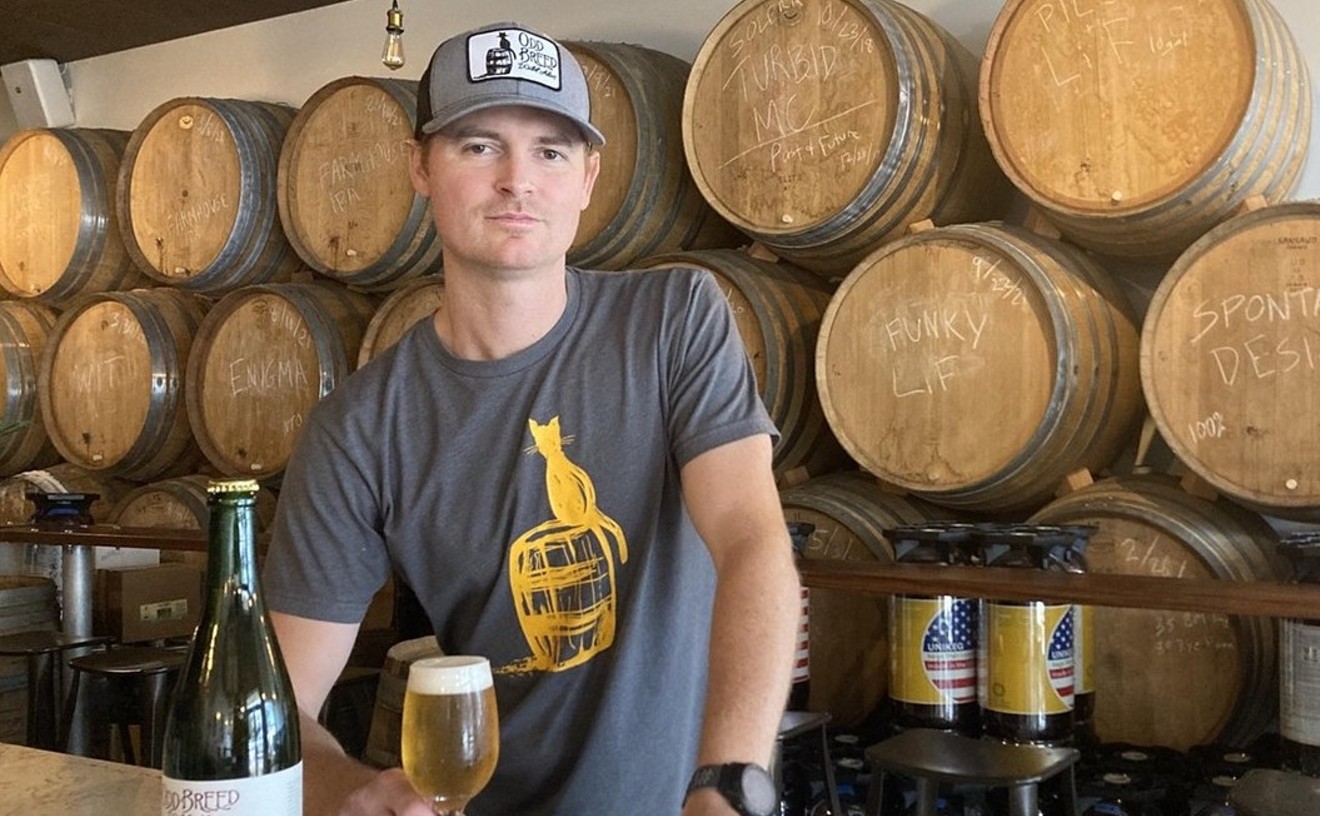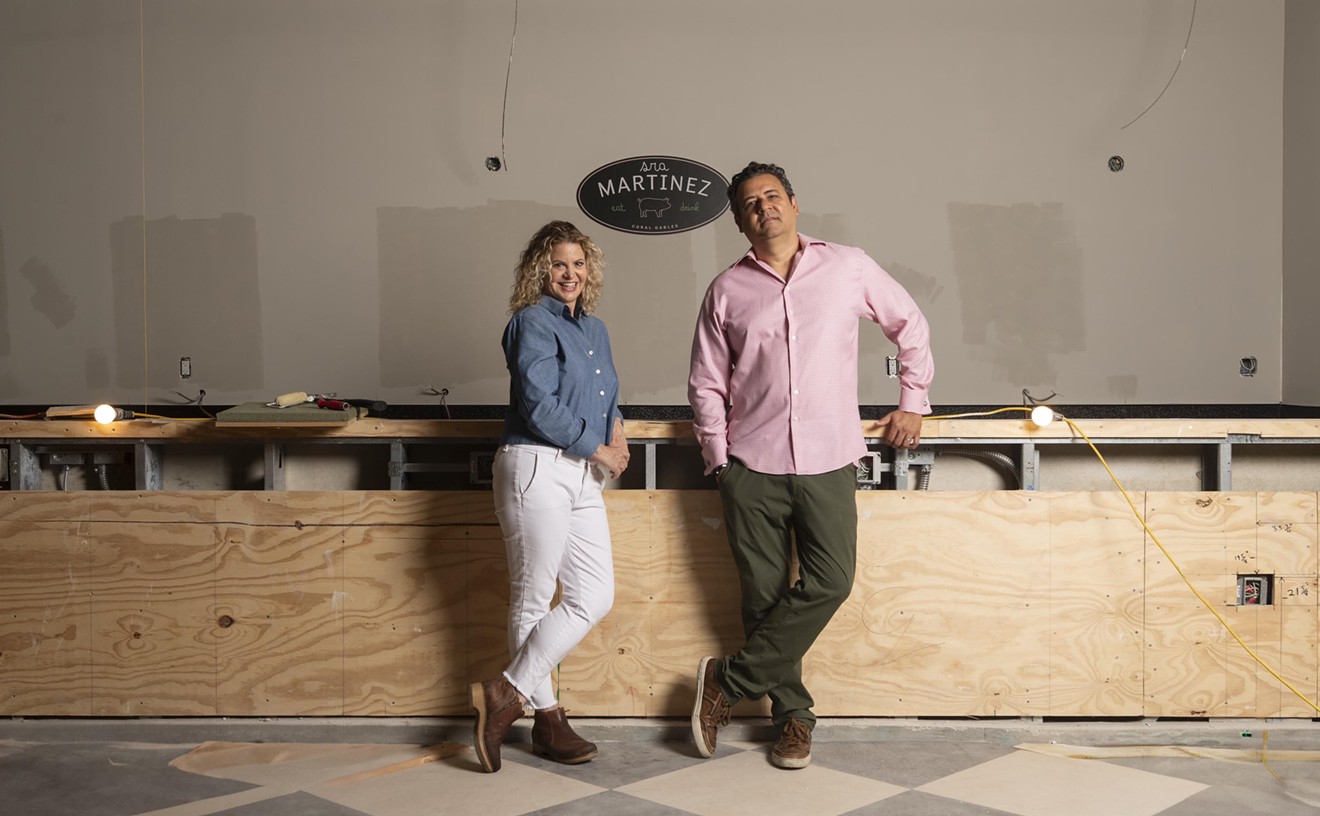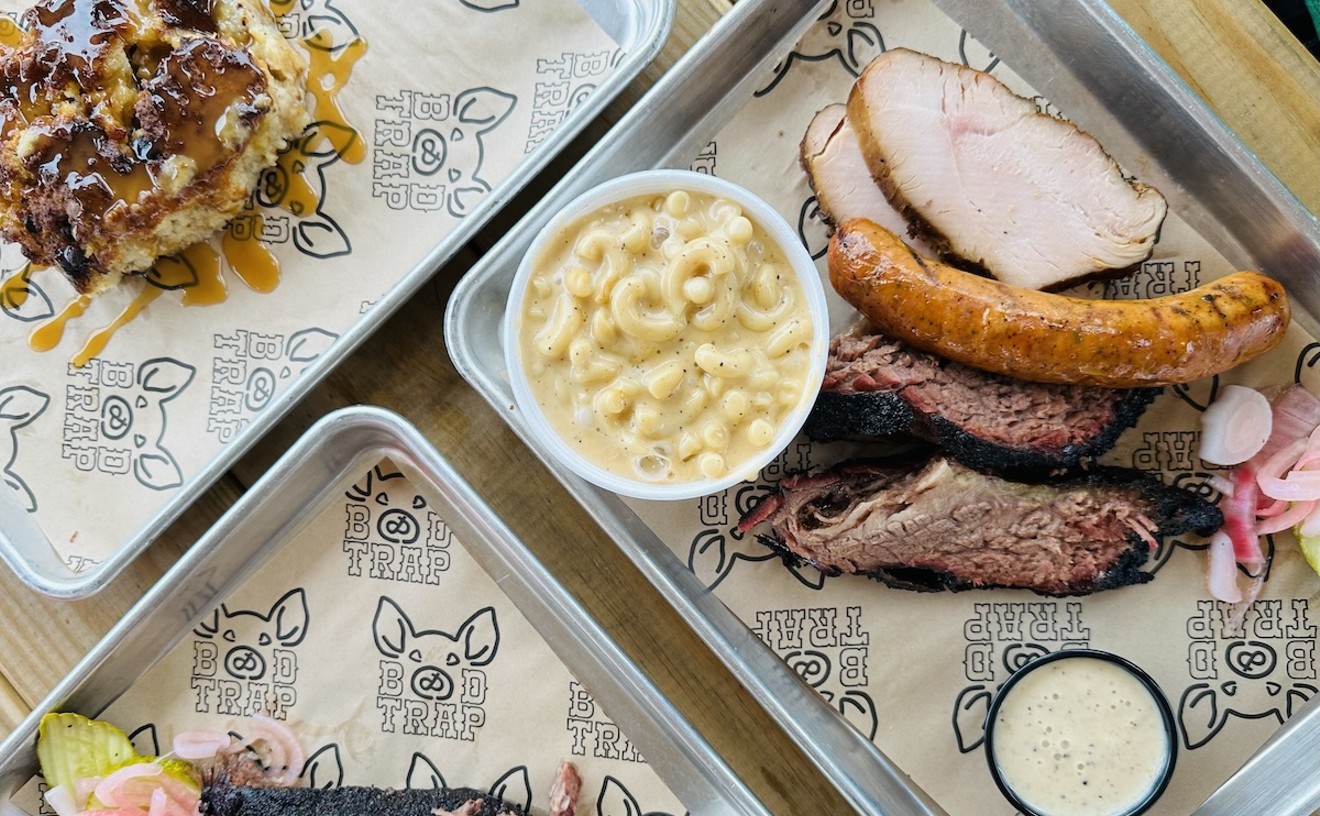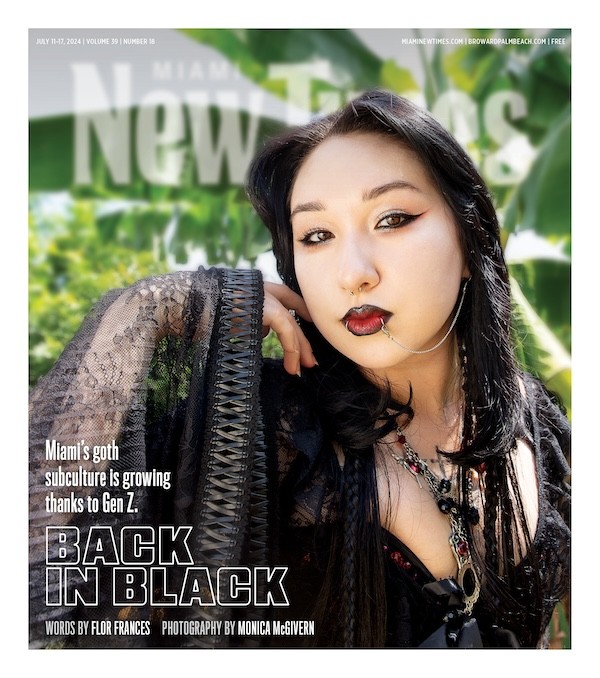As a comestible, raw oysters run the gamut from a luxury commodity that begins a quality meal in a high-end restaurant to a $1 happy-hour attraction. Regardless of where or how they get them, though, many diners love this versatile treat, which is found around the world.
Part of the appeal of eating oysters in their uncooked form is their crisp, mineral flavor and velvety texture. The other part is the ceremony that goes along with it. First, much as you do with a wine list, you mull over which kind of oyster you want. Here, you generally choose from certain North American terroirs: East Coast, West Coast, Mid-Atlantic. Today's oysters are typically farmed and many varieties are available, ranging from the Eastern and well-known Wellfleet to the West Coast, Japanese-derived Kusshi.
Then, once they're served, usually on the half shell nestled into a platter of crushed ice, you relish squeezing a lemon wedge over the creamy, freshly shucked flesh. You appreciate doctoring the meat — which is, yes, still alive — with any combination of horseradish, cocktail sauce, and/or mignonette (minced shallots and red wine vinegar) to your particular preference.
Finally, you eat it. Some people toast shells first the way you do glasses for luck, then tip the contents from the wide end of their cups directly into their mouths, savoring the liquor (the juices). Others use tiny forks to grab only the meat neatly. Some folks swallow it whole. Others first give it a light chew or two to release its briny flavor.
Washing down those mollusks with an iron-rich stout, a pebbly Sancerre, or a zesty bloody mary, all of which pair beautifully with a raw oyster, is another important element of the experience. In fact, drinking while tossing back a dozen oysters on the half shell is so much a part of the tradition that you can even order your oyster and drink together as a bloody mary oyster shooter.
What’s not part of the ritual? Dying afterward.
But the fact is, being killed by a raw oyster can and does happen — up to about 100 people annually in the U.S., according to the Centers for Disease Control and Prevention (CDC). In fact, 22 people have died from oyster-related illnesses so far this year.
Vibrio, a pathogenic bacteria that cause such an unhappy event, sickens many more than that, though. About 80,000 people will come down with some kind of vibriosis each year. In the literature on the CDC’s site, it notes, “Most vibrio infections from oysters result in only diarrhea and vomiting. However, some infections, such as those caused by Vibrio vulnificus, can cause more severe illness, including bloodstream infections and severe blistering skin lesions. Many people with V. vulnificus infections require intensive care or limb amputations, and 15-30% of infections are fatal.”
Indeed, the CDC estimates that about one in five people infected with V. vulnificus will die. Risk factors for death — as opposed to just getting super sick — include the ones that make you more vulnerable to COVID-19: cancer, diabetes, HIV, being on immunosuppressive therapy for diseases, cirrhosis of the liver or other liver diseases, being 65 or older, and several other conditions.
Unfortunately, Florida has already exceeded the CDC’s estimated odds. And those odds have struck like lightning pretty close to home: On July 31, eight days after he reported to Memorial Pembroke Hospital, Davie resident Roger “Rocky” Pinckney died from V. vulnificus. He had consumed the offending oyster at Fort Lauderdale’s Rustic Inn Crabhouse, the Sun-Sentinel reported, on July 21 while celebrating his birthday and his daughter’s high school graduation.
His daughter, however, did not get sick even though she too had eaten raw oysters. And Rustic Inn, where Pinckney had worked as a busboy a couple of decades ago, passed a subsequent Florida Department of Health inspection and is permitted to continue serving oysters. No one has turned up sick since or reported another illness in relation to oysters from Rustic Inn Crabhouse.
Only nine days later, however, Pensacola resident Rodney Jackson also died of V. vulnificus. He had purchased raw oysters from Maria’s Fresh Seafood Market, according to the Pensacola News Journal.
Lightning, it appears, does strike twice. At least in Florida.
In fact, so far this year, six people in the state have died from 26 confirmed V. vulnificus infections, according to the Florida Department of Health. It’s unclear if these two recent deaths have been counted among them. But they do have something else in common: In both cases, the oysters were sourced from Louisiana.
So what does that mean, exactly, for raw oyster connoisseurs? Should restaurants stop serving them? Should we stop eating them? Or is it just oysters from Louisiana — a Gulf state like Florida — that we need to shun? And does that mean we also need to stop eating our own oysters?
In short: not completely. But if you frequent raw bars — not to mention sushi joints and other places that serve raw fish and shellfish, you might have noticed that such places nearly always have a sign or menu note warning you that consuming such fare comes at your own risk. Even if you only occasionally snack on a crudo or a tiradito as an aperitivo, you probably see that these items have an asterisk on the menu. Somewhere, somehow, there's a statement, be it on the menu or posted elsewhere, in which the restaurant and its management absolve themselves from circumstances beyond their control. Like a V. vulnificus infection.
Such warnings almost always include advisories to pregnant women, the elderly, and the immunocompromised that the consequences for them may be worse. So they should be even more careful in their consumption.
Legally, this means a restaurant has complied with health department-mandated consumer advisories and disclosures. But restaurants and caterers, too, can and should take reasonable precautions.
Alex Gilardi, who along with Brandon Mesa cofounded and runs the Lazy Oyster, a bespoke oyster pop-up and delivery company in Miami, says it’s mainly the Louisiana question that worries him. “I feel bad for the gentleman that passed away. I feel bad for the restaurant, although I heard they passed the health inspection. And I feel bad for a lot of bars and restaurants along the Panhandle that will take a big hit from this,” he says. “But we’ve never carried Gulf oysters. And I never suggest to anybody to have raw Gulf oysters during the summer — oysters that may come from Alabama, Louisiana, or Florida. It’s just such a hot climate.”
Gilardi is largely talking about the water temperature. When the ocean heats up in the summer, the "bad" algae and bacteria increase. Southern residents used to know this as an old wives’ tale: Never eat oysters in the months without an r in them. That would be May, June, July, and August. Like most myths, there’s some truth behind it. These are the months when the ocean in the Southeast is the warmest, when red tide rolls in and the stink of algae reminds you that what’s in the water is also being consumed by the fish and shellfish.
The problem is, we’re so used to having a place like Danny Serfer's Mignonette offer us a half-dozen tempting options from the Northeast and Northwest that we forget that other restaurants may be sourcing their oysters closer to home. It doesn’t even occur to us that they’d be coming from across the Gulf, bounced around for four or five days in the highest possible humidity during extreme heat warnings.
The humidity, too, is a problem, Gilardi acknowledges. “Oysters don’t like to be shocked. They don’t like big changes in temperature. You have to keep them at around 42 degrees. If it hits 30 and then goes up to 60 and then back down to 40, they’re going to go bad or die.”
This is one reason Gilardi is so firm about sourcing his oysters from cold-water farms located in places like Massachusetts, Prince Edward Island, Washington, and British Columbia: less likelihood of water-to-air-to-truck temperature changes — although climate change is certainly making that more difficult everywhere, not just in the deep South. He also inspects each farm he contracts with to do business, watching how they load them for transport. He wants his oysters within two days out of the water and in his clients’ hands as soon as possible after that.
To appreciate why Gilardi insists on cold-water oysters, it’s important to understand that these mollusks are filter feeders. They eat by extracting matter from the water. Whatever is being sieved through those little sponges at the time they’re harvested is also going into the body of whoever eats it. If that happens to be pathogenic bacteria, so be it. That’s why one oyster can be a lethal bite of poison and the one harvested next to it can be the typical delicacy we expect.
How can you tell one from the other? You can’t. V. vulnificus is odorless, tasteless, and colorless. You won’t know it’s there. In fact, you don't even have to eat it to contract the illness. If you have a cut that comes into contact with an infected oyster or its water, you could get sick. In other words, you could contract V. vulnificus by swimming in infected waters with an open wound.
In terms of consuming it, though, you can easily kill V. vulnificus by cooking it. “I’ve had Florida oysters before. I love to cook with them because they’re meatier,” Gilardi says. “And that’s probably why some people find them attractive. That, and the price point. But they have more of a pond-water flavor profile as opposed to brininess or minerality.”
Not to put too fine a point on it, but Gulf oysters are cheaper. According to Gilardi, a Louisiana Gulf oyster will cost a restaurant about 30 cents each as opposed to about $1.50, which is what Gilardi and fine-dining chefs like Michael Paley pay for their oysters.
Paley, who heads up the new Klaw in Edgewater, has been working with Island Creek Oysters for the past decade. “They cut out the middleman,” he says. “The oysters come direct from their group of oyster farms in New England straight to our kitchen, most times in less than 24 hours since they were harvested. The quality is unmatched.” (Having dined on those raw oysters on our own dime at Klaw, New Times can attest to that fact.)
Of course, you might pay a premium for that kind of service at Klaw — we certainly did — where you can get oysters on the half shell or served as a clever “sidecar” with the “Mignonette” martini at its rooftop bar. Still, knowing where your oysters come from and how long it takes to get to you are two things completely under your control as a consumer. If the provenance of the proffered oyster isn’t clear from the menu, or the servers don’t know, you can ask to see the oyster tag at any restaurant. This is what identifies the oyster and also dates when it was harvested. Paley says, “In the restaurant, we keep the tags with the oysters until they are used, and then file the tags with the date the final oyster was sold. Read your shellfish tags. All oysters come with them.”
Both Gilardi and Paley note that a properly sourced and cared-for oyster can have a refrigerated shelf life of up to 21 days. But three weeks is really the outer limit. A restaurant that’s held on to oysters for three weeks might suddenly decide to have a $1 oyster happy hour to get rid of them.
That’s right, you probably should be suspicious of oyster happy hours. Gilardi confirms this, allowing that he rarely does such happy hours for clients because he not only loses money on the product but he feels that it disrespects the hard work of oyster farmers. And he will never eat at one, knowing that most of them are serving old, improperly stored, or inexpensive Gulf oysters.
Nor is V. vulnificus the only thing you have to watch out for when consuming oysters. Like clams, mussels, and other mollusks, oysters should be alive, their shells tightly sealed, when shucking them, whether you’re planning to eat them raw or cooking them. At large events, like festivals, when shuckers have to plow through thousands of oysters, it’s easy to miss a partially opened one — which means it’s dead. Gilardi says the worst case of food poisoning he ever suffered was from a cooked oyster that was probably dead to begin with.
He also recommends not eating oysters that have been sitting on ice in display cases. The temperature control here is all wrong, he notes, with the top of the shell too warm and the bottom too cold for the finicky creatures. Instead, oysters should be kept in the back of the refrigerator in a perforated bowl for airflow, with a damp paper towel on top. And the flesh itself should never come into contact with fresh water. "Oysters like the same environment they came out of," he says.
But don’t let these issues — terroir, climate change, transportation, storage, age — scare you. As with mad cow disease, V. vulnificus-related deaths are grievous and unfortunate, especially for the families involved. But they’re not an epidemic.
Instead, use these incidents as a warning to sharpen your expertise and expand your knowledge of enjoying fine oysters by following Paley’s advice. “A fresh oyster smells like the sea, has plump meat and clear liquor. Above that, they have amazing, delicate differences in flavor based on their geographic location and the waters they grow in. Salinity, brine, vegetal notes — all of these things are characteristics of the best oysters.”
And the best oysters — not the cheapest ones — are what you want to eat when you’re ordering them on the half shell.
[
{
"name": "Air - MediumRectangle - Inline Content - Mobile Display Size",
"component": "19274298",
"insertPoint": "2",
"requiredCountToDisplay": "2",
"watchElement": ".fdn-content-body",
"astAdList": [
{
"adType": "rectangle",
"displayTargets": "mobile"
}
]
},{
"name": "Editor Picks",
"component": "17482312",
"insertPoint": "4",
"requiredCountToDisplay": "1",
"watchElement": ".fdn-content-body",
"astAdList": [
{
"adType": "rectangle",
"displayTargets": "desktop|tablet"
},{
"adType": "rectangle",
"displayTargets": "desktop|tablet|mobile"
}
]
},{
"name": "Inline Links",
"component": "18711090",
"insertPoint": "8th",
"startingPoint": 8,
"requiredCountToDisplay": "7",
"maxInsertions": 25
},{
"name": "Air - MediumRectangle - Combo - Inline Content",
"component": "17482310",
"insertPoint": "8th",
"startingPoint": 8,
"requiredCountToDisplay": "7",
"maxInsertions": 25,
"watchElement": ".fdn-content-body",
"astAdList": [
{
"adType": "rectangle",
"displayTargets": "desktop|tablet"
},{
"adType": "rectangle",
"displayTargets": "desktop|tablet|mobile"
}
]
},{
"name": "Inline Links",
"component": "18711090",
"insertPoint": "8th",
"startingPoint": 12,
"requiredCountToDisplay": "11",
"maxInsertions": 25
},{
"name": "Air - Leaderboard Tower - Combo - Inline Content",
"component": "17482313",
"insertPoint": "8th",
"startingPoint": 12,
"requiredCountToDisplay": "12",
"maxInsertions": 25,
"watchElement": ".fdn-content-body",
"astAdList": [
{
"adType": "leaderboardInlineContent",
"displayTargets": "desktop|tablet"
},{
"adType": "tower",
"displayTargets": "mobile"
}
]
}
]

